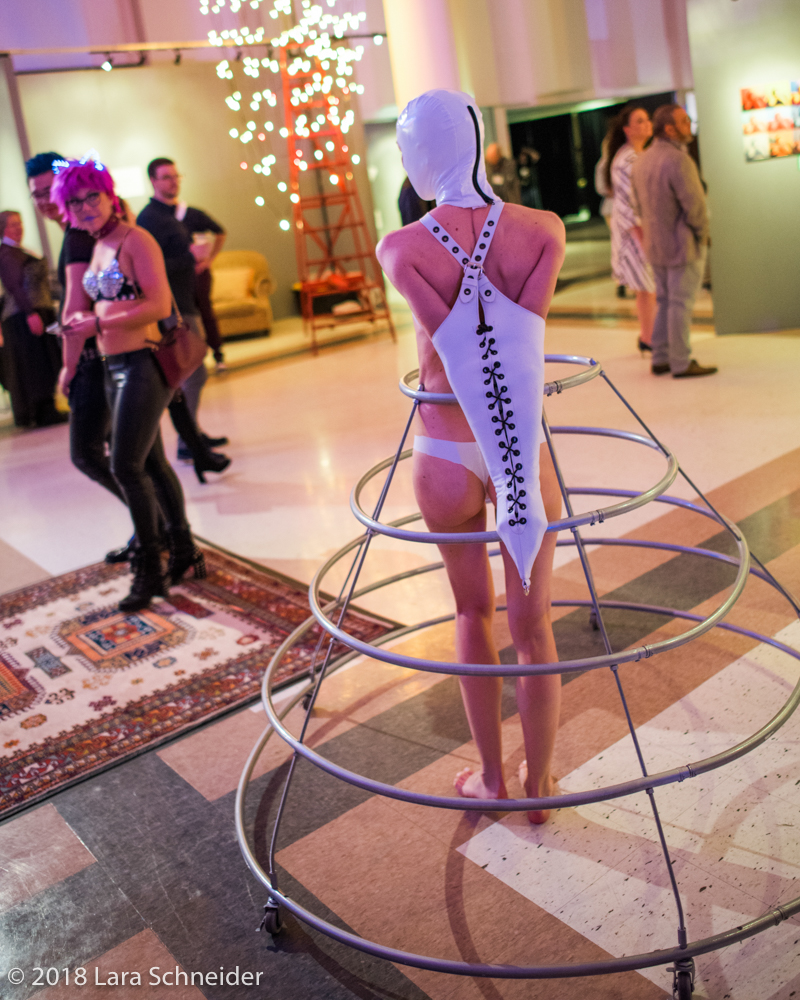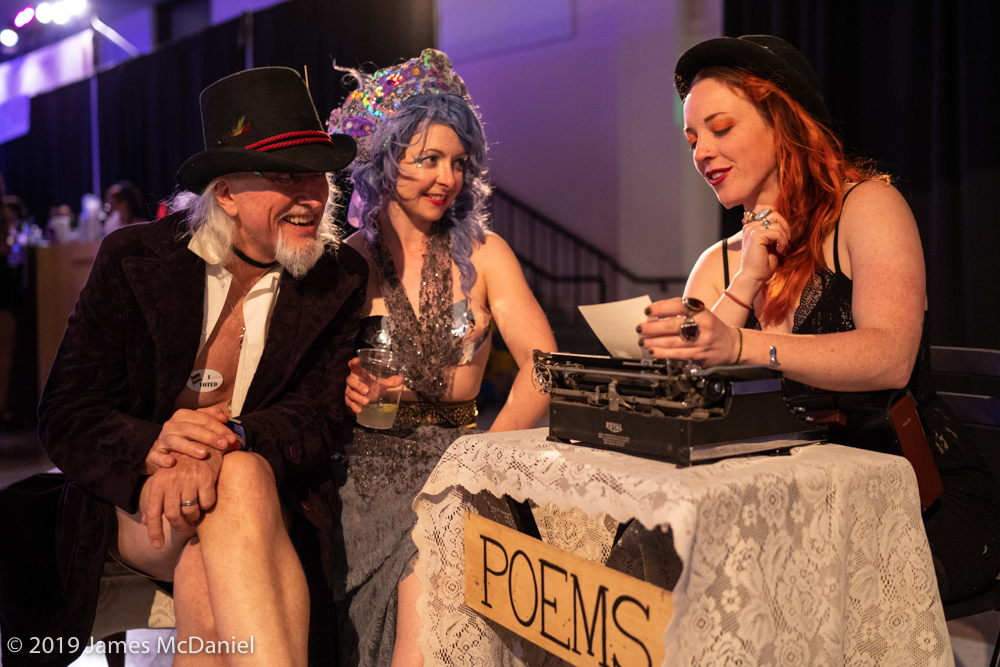Gather ‘round, you delightful creators! We are here today to talk about Installation Art and Interactive/Ambient Performance! What it is, how it works, what it isn’t, and what we’re hoping for!
So what is installation art? Well, it can be any piece of art that comes together on site at the festival. In the past this has taken the form of sculpture gardens, special furniture designed to both excite and invite, poets that produce poems in the moment and on demand, letters written to be found by other guests, and more. The most common feature among the art installations is that they have to be experienced – it is a sight or a sound or performance that is happening in that space and in that moment. Many of our installation pieces will cease to exist once they are disassembled after the festival.

What, then, is interactive or ambient performance? These are performance pieces that do not take place on the main stage or the aerial stage, but rather out in the crowd amongst guests. Now, still experiencing the persistent ripples of the pandemic, some of the more interactive performances that we have seen in the past aren’t necessarily safe or appropriate at this time. You will see us phasing out the language of “interactive” performance more in favor of “ambient.” Can ambient performance be interactive? Absolutely. We are hoping, however, that things move in a less hands on direction. Ambient performances should still be experiential – they should add to the flow and feel of the evening, with an awareness of the shifting crowd. Ambient performance needs to also be adaptable. You do not have a fixed stage or a certain number of guaranteed square feet.

So then, why are we talking about ambient performance and installations in the same article? Because there is a fair bit of overlap. If your performance requires a pop up station, with assembly and a dedicated floor space, it is an installation. Some examples of installations with performance elements from past shows include the time a performer licked her way through a pane of candy glass over the course of several hours, or a poet with a tiny desk and typewriter that produced poetry on demand.
If your piece is just a matter of a few props and is more maneuverable, then it is an ambient performance. Some examples of ambient performance from past shows include a small troupe that brought out a box and played dress up, performing short dance pieces based on what they pulled out of the box, or a pair of clowns that would set up in front of a piece of art with a stanchion and pantomime an argument between art critics.
So now that we’ve got all that covered, let’s talk about grants! A total of $2000 in grants are available for installation artists, with a maximum of $300 per installation. It is important to know that grants are not money to create art, they are money for supplies to create art. If you apply for a grant, you will be expected to detail what the grant money covers. This can include things like supplies for the installation and the shipping or transporting of those supplies. It cannot, however, cover airfare, hotels, or performance fees.
Installation art and ambient performance are a big part of what makes the festival the unique experience that it is. We are excited to hear your ideas and see what all you have in store for us.
